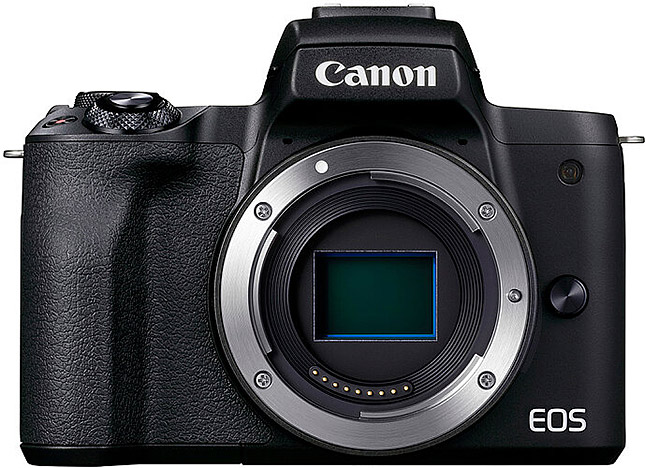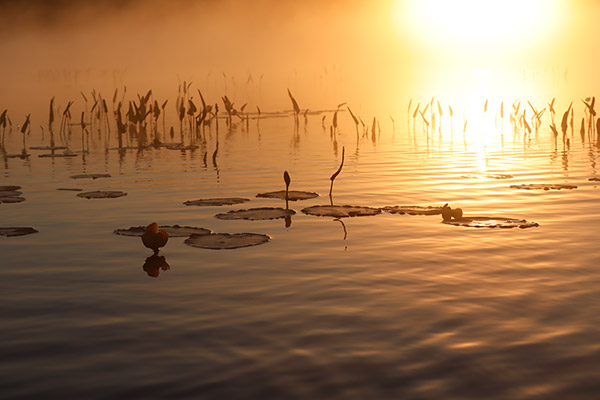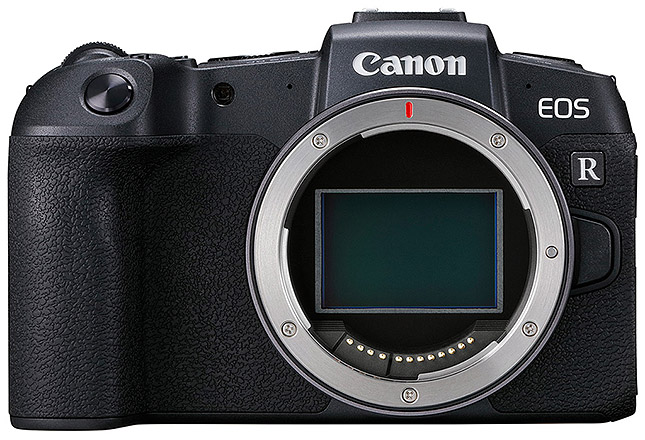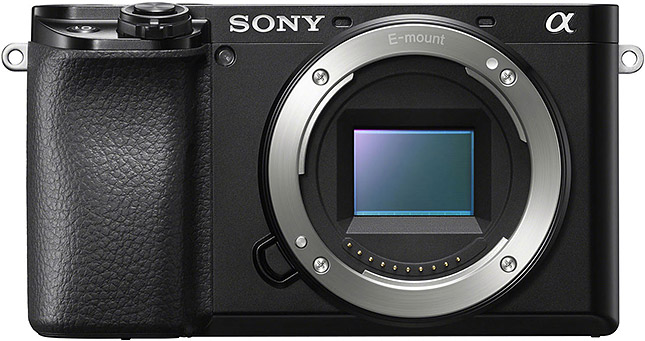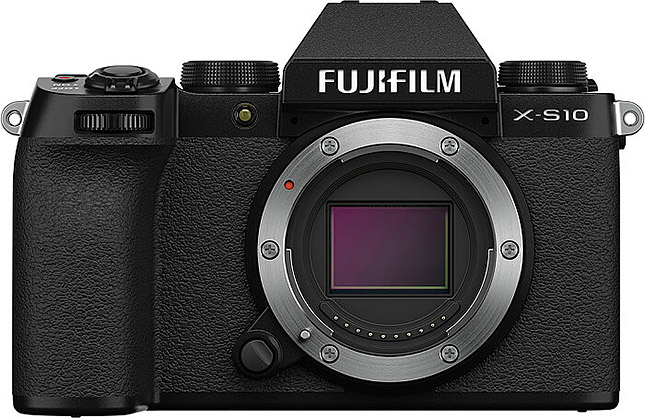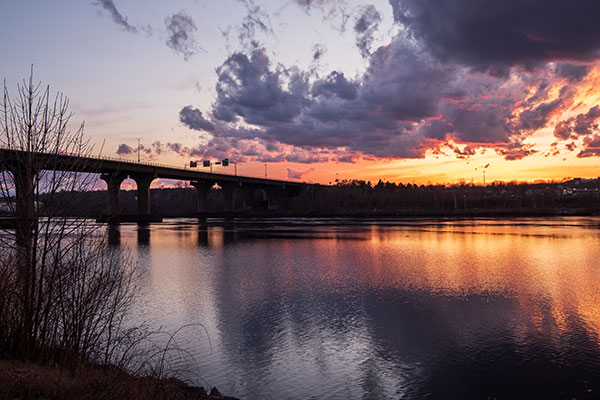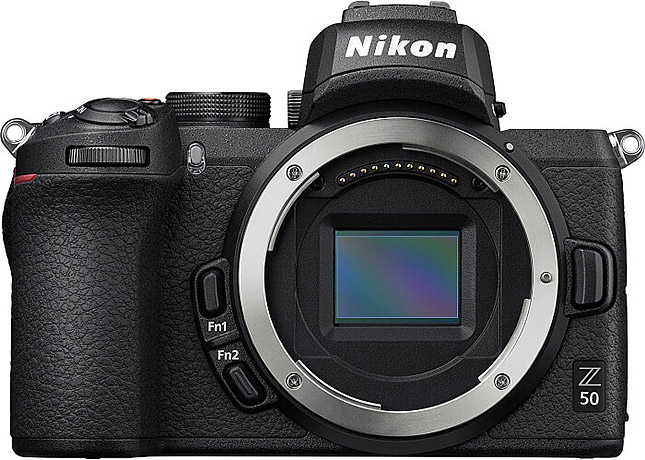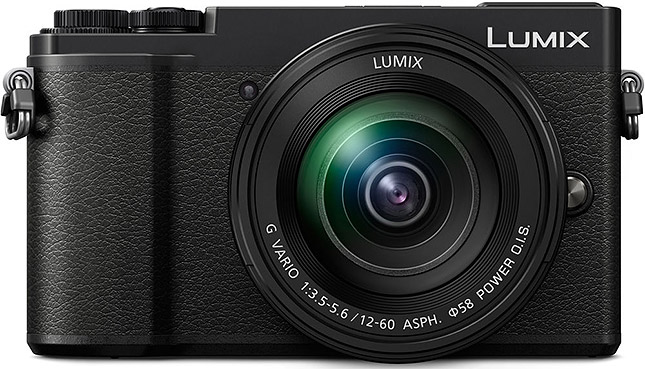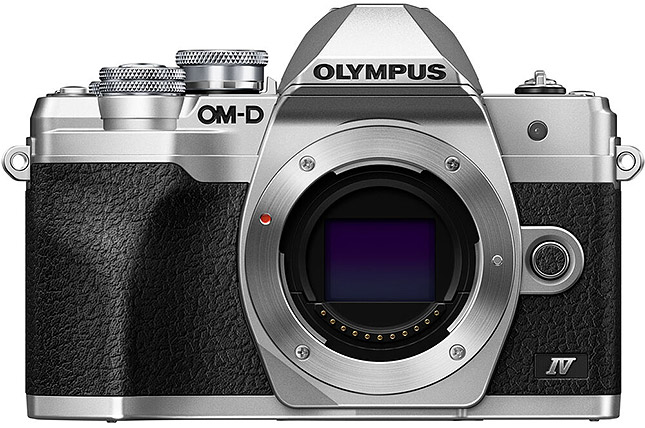13.34.00 The best mirrorless cameras for under $1000 in 2021: Full-frame, APS-C, MFT, there’s something for everyone! | |
by William Sawalich posted Friday, August 20, 2021 at 6:00 PM EDT
When it comes to mirrorless cameras under $1,000, there are many good options nowadays. These bodies offer a great balance of image quality, compact size and control, all wrapped up in an affordable package. That said, there's a reason these cameras remain less expensive: they lack some of the features of their high-end brethren. So when browsing these bodies, know from the get-go that you're choosing among intermediate cameras. A pro might find some features lacking, while a beginner might think some of the controls are overkill. For many, though, that's precisely why these cameras hit such a sweet spot. So what's the catch? Well, when compared to more expensive prosumer cameras, there are some common compromises. Build quality, for instance, might not be as robust and with less weatherproofing than in the cameras for the pros. And in lieu of 40- or 50-megapixel sensors, these bodies typically provide around 24 megapixels. However, that's still quite a reasonable resolution; large enough for quality printing but not so big as to create a cumbersome workflow. These mirrorless cameras are also light and compact—a definite plus for those who prefer traveling light or simply want to remain unobtrusive while they shoot. The downside is that they generally suffer from shorter battery life simply because they don't have the physical capacity of a bigger battery that a bigger body allows. In-body image stabilization is becoming more common among mirrorless ILCs in this price range, though a couple of the cameras listed here have sacrificed it. Likewise, Wi-Fi and Bluetooth connectivity are also usually present and make social media sharing a snap. Electronic viewfinders are included on all of these bodies, and most include articulating 3-inch LCDs, as well. One of my favorite mirrorless camera features is also consistently present: face-detecting autofocus. This tool is a great way to ensure photos with people will have sharp faces, and it even tracks focus as the subjects move across the frame. While this might have seemed like something out of science fiction not long ago, now it's become a de facto standard even on affordable, intermediate cameras. In terms of video, these cameras also offer 4k capture, though it's often cropped and with frame rate limitations as well. Unlike more expensive cameras, these bodies don't always have dedicated microphone inputs and headphone outputs, so serious video shooters may find them a bit limiting. Lastly but maybe most important are the sensors. Mirrorless cameras at this price point typically sport sub-full-frame sensors, either APS-C or Micro Four Thirds. That's true of this list as well—with the exception of one. So without further ado, read on for eight great bodies we've deemed the best mirrorless cameras available for under $1,000.
Best for a Tight Budget - Canon EOS M50 Mark IIThe Canon EOS M50 Mark II boasts a 24.2MP APS-C sensor and the EF-M lens mount for compact Canon lenses. At $599, it's the most affordable camera on our list, and for just 100 bucks more, it comes with a 15-45mm zoom lens as well. For those who want even more zoom range, the two-lens kit adds a 55-200mm zoom yet the whole package still comes in well under $1,000. The M50 Mark II is also packed with features that make it especially useful for those who want to shoot and share video online: wireless YouTube streaming, vertical video and an HDMI out. It captures UHD 4K at 24p and 1080p HD video, as well as 720p HD at 120fps for slow-motion playback. Dual pixel autofocus is fast and accurate and has some notable upgrades over the original M50, while battery life has also improved. The 5-axis in-body image stabilization makes handholding video possible, and helps when shooting stills in low light. (See our in-depth review of the original Canon EOS M50.)
Photo from original Canon M50 - 55mm, f/11, 1/500s, ISO 100 (Photo by Jeremy Gray) Shortcomings: Battery life is not great, not many fast/bright-aperture lenses for EF-M mount. Estimated Street Price: $599 - Check current prices at B&H or Amazon
Best Full-Frame - Canon EOS RPSqueaking in just under our price wire is Canon's EOS RP, a compact mirrorless camera with a 26.2MP full-frame CMOS sensor and a $999 price tag. While 26.2MP may not be anything to write home about, the sensor size sure is. For those who want the full-frame look, there are few mirrorless options under $1,000, unless you go the route of a pre-owned camera. Full-frame sensors make achieving wide angles of view much easier, a boon to landscape shooters and street photographers alike, as well as anyone who relishes buttery smooth bokeh (the quality of the out of focus area of an image) and generally lower noise when shooting at higher ISOs (all else being equal). That low noise/high ISO attribute improves image quality indoors, in low light and when shooting at night.
35mm, f/2.2, 1/60s, ISO 1000 (Photo by William Brawley) Speaking of low light, the EOS RP offers ISO expansion up to a whopping 102,400. The RP uses Canon's Digic 8 image processor (as does the aforementioned EOS M50 Mark II), which is the same processor used in the EOS R at nearly twice the price. The EOS RP captures UHD 4K and full HD 1080p video, too. Another great feature is the RF lens mount, which can accommodate Canon's professional L-series lenses, both native RF-mount and EF-mount L-series lenses by way of an adapter. Shortcomings: No in-body image stabilization makes handholding video all but impossible. 5fps burst mode isn't much. Dual-pixel AF is unavailable with 4K video. Estimated Street Price: $999 - Check current prices at B&H or Amazon
Best for Sports and Wildlife - Sony A6100If you hate waiting for a camera to find focus, Sony's A6100 may be the model for you. It's a 24.2MP APS-C compact camera with great autofocus that tracks moving subjects very well and is also easy to use. It's practically a point-and-shoot, but what pocket camera offers burst shooting up to 11fps with continuous autofocus and great subject-tracking? The autofocus is so fast and accurate, and with such great sensor coverage, that the A6100 becomes a viable option for wildlife and sports enthusiasts who want to freeze fast action. Wildlife shooters will also appreciate that the eye-detect autofocus can be set to track animal faces and eyes, as well. Though there are certainly other cameras with higher performance and additional capabilities for sports and wildlife pursuits, they are more expensive. The Sony A6100 provides a lot of performance in a small and affordable package. The A6100 also captures high-quality 4K video at 30p with a crop, though at 24 frames per second it's crop-free. And the AF system works well in video, too. It may not be the newest camera on this list, but it's consistently well-liked. It's got the same sensor and processor as the higher-end A6600, so one might consider the A6100 to be a distinct upgrade over the older, also widely loved, A6000. Shortcomings: EVF is SVGA (rather than OLED) and the body is plastic with minimal weatherproofing. No S-Log, which serious video shooters might miss. Estimated Street Price: $748 - Check current prices at B&H or Amazon
Best Camera for Control Freaks - Fujifilm X-S10Fujifilm's X-S10 is two-thirds the cost of the X-T4, but it uses the same sensor, processor and autofocus system as the flagship body. (That would be the 26.1MP APS-C X-Trans BSI CMOS 4 sensor and X-Processor 4.) And unlike many X Series cameras, the Fuji X-S10 is only the second to include in-body image stabilization (after the higher-end X-H1), so handholding stills and video is more effective than ever. It weighs in at just over a pound with batteries thanks to partial magnesium construction. It may not be weather-sealed to a pro's standards, but the camera is well built and feels solid in the hand. Speaking of hands, sometimes the smallest cameras are uncomfortable to hold. But the X-S10 remedies that with a more pronounced handgrip, keeping the body small and light but also ergonomically comfortable.
55mm, f/7.1, 1/250s, ISO 160 - Velvia Film Simulation (Photo by William Brawley) Speaking of styling, the X-S10 is no slave to retro looks so much as it's retro-inspired: familiar to those who want traditional controls without forcing the throwback vibe often seen on other Fujifilm cameras. Better still, those controls have been changed in favor of a PASM mode dial approach that's easier to use for anyone unfamiliar with Fuji's traditionally quirky method of adjusting exposure modes. For those looking to test the extremes of stills and video, the X-S10 offers some settings totally unique among its peers. These include a shutter speed range from 1/32,000 to 900 seconds, 240-frames-per-second full HD (for super-slo-mo video), and a 20-frames-per-second burst of stills using the electronic shutter. It can also capture 4K video at 30p without cropping, and the microphone input and included USB-C headphone adapter are helpful too. Fuji's "Film Simulation" options are also a neat way to create different looks without additional processing in post, while RAW capture options offer more control. Shortcomings: Lacks weather-sealing. No dedicated headphone jack nor 4K 60p video that more advanced video shooters might desire. Estimated Street Price: $999 - Check current prices at B&H or Amazon
Best Image Quality on a Budget - Fujifilm X-T30There's good news for those who like the image quality of the Fujifilm X-T3: you'll also like the image quality of the X-T30. In 2018, we rated the X-T3 as the year's best overall camera and many of its features are shared by the more affordable Fujifilm X-T30. This trickle-down tech includes hybrid AF and the same 26.1MP APS-C X-Trans BSI CMOS 4 Sensor and X-Processor 4 quad-core CPU. These position the retro-styled X-T30 to provide high quality in a small camera at a low price. Standout features are improved image quality at high ISOs and crop-free 4K video, as well as 10-bit log output when recording to an external recorder via the HDMI out.
21mm, f/7.1, 1/15s, ISO 250 (Photo by Jeremy Gray) Some users complain of less than optimal ergonomics, and hard-charging photographers may not appreciate the less-rugged build quality and lack of weather sealing, while the lack of IBIS makes handholding video a real challenge. But the X-T30 makes up for it in other ways. Like the aforementioned X-S10, the X-T30 includes several useful color modes including Fuji's classic array of "Film Simulations." For those who want to capture fast action, burst mode options include 8fps with the mechanical shutter, 20fps with the electronic shutter, and even 30fps with a 1.25x crop that produces 16MP image files. Shortcomings: Less comfortable ergonomics. Lack of in-body stabilization is a problem for video. 4K Video limited to 10-minute clips. Estimated Street Price: $799 - Check current prices at B&H or Amazon
Best for Transitioning from a DSLR - Nikon Z50When you choose a camera from a longtime industry leader like Nikon, you expect to get a camera that's comfortable and easy to use. The affordable mirrorless Nikon Z50 is no exception. With its 20.9MP APS-C (DX) sensor, the Z50 isn't winning any resolution competitions, but it's no slouch for most users. What it is doing, however, is making it comfortable to capture quality images with good dynamic range on a camera that's compact yet still feels familiar to those used to working with SLRs. For those who might still be holding on to their DSLR for fear that compact mirrorless systems may not fit quite right, the Z50 is a great way to test the waters of a move to mirrorless. Not only is the camera comfortable, but with all of the buttons and dials placed just so, the camera is incredibly intuitive, too. Employing the large Nikon Z mount, the Z50 is set up to use Nikon's best lenses specially made for mirrorless, which provide uncompromised image quality in a smaller form factor. For photographers who want to shoot in the dark, the Z50 features expandable ISOs to a whopping 204,800 as well. It can capture 4K video too, but with a 1.5x crop.
50mm, f/1.5, 1/80s, ISO 450 (Photo by William Brawley) Shortcomings: Not a lot of megapixels. No in-body image stabilization. Estimated Street Price: $860 - Check current prices at B&H or Amazon
Best for Traveling Light - Panasonic GX9A "Dave's Pick" and the editors' choice for best intermediate camera in 2018, the Panasonic Lumix DC-GX9 remains one of the best mirrorless cameras under $1,000. With its 20.3MP Micro Four Thirds Live MOS Sensor that also lacks an optical low-pass filter, the GX9 delivers maximum sharpness. With a 12-60mm kit lens attached, it's a compact and versatile camera that's great for traveling light. The camera offers other favorite features, such as an articulating touchscreen LCD, a tilting electronic viewfinder, and 5-axis in-body image stabilization claimed by Panasonic to provide an additional four stops of handholding capability. That's also an aid to travelers as sharp photos are possible in low light without a tripod.
32mm, f/5.6, 1/640s, ISO 200 (Photo by William Brawley) Available in black and silver versions, the GX9 may lack the weatherproofing of its higher-end counterparts, but it's a compact and affordable way to produce quality image files—and that's always a winning combination. Fun features include Sequence Composition mode, which is a cool way to make composites of multiple images in-camera. Think Eadweard Muybridge-style action sequences without ever touching a computer. Shortcomings: No microphone jack or headphone jack, and 4K video is cropped. Battery life leaves a little to be desired, and the EVF is not OLED. Estimated Street Price: $998 w/ 12-60mm lens - Check current prices at B&H or Amazon
Best Entry-Level Micro Four Thirds - Olympus E-M10 Mark IVThe Olympus E-M10 Mark IV is a 20.3MP Live MOS Micro Four Thirds camera that weighs just 13.5 ounces, battery included. In this update to the popular E-M10 Mark III—which was rated IR's 2017 best intermediate mirrorless camera—the Mark IV adds a few features that make the camera more versatile and user-friendly. First is improved ergonomics, with a new grip that makes the compact body easier to hold. Next is a tilting LCD that opens up a wealth of new camera angles, including waist-level shooting and, for those so inclined, selfies. The updated face and eye-detecting autofocus system helps produce sharper images, while the OLED viewfinder shows the full frame at high resolution. Five-axis in-body image stabilization provides up to 4.5 stops of compensation, and it's all done with a nod to old-school styling and the manual dial controls many photographers have come to prefer.
200mm, f/4, 1/400s, ISO 250 (Photo by Dave Pardue) The E-M10 Mark IV offers 28 camera modes, including several uniquely useful modes like multiple exposures, live composite, HDR, silent shooting, automatic exposure bracketing, autofocus bracketing, and even digital shift—a kind of simulated tilt/shift compositional control for photographers who want to photograph architecture while minimizing the keystone distortion that often occurs, all without the need for post-processing after capture. The E-M10 Mark IV is capable of 4K video capture at 30p, features a large OLED EVF, 15fps burst mode, and good manual controls for those who prefer a retro-inspired (and to some, more user-friendly) tactile dial experience. It's even got a built-in pop-up flash! Shortcomings: 20 megapixels isn't exactly impressive. Somewhat cramped camera controls. Estimated Street Price: $699 - Check current prices at B&H or Amazon • • • Your shopping clicks make a difference!If this article or any of our other efforts here on this site have helped you decide which camera you're going to spend your hard-earned cash on, we'd appreciate it so much if you'd use one of the links we've provided above to make your actual purchase. Doing so doesn't cost you anything extra, but makes a huge difference to us, helping to keep our informed, unbiased tests and opinions coming! Thank you! Want some more camera gear recommendations? See some of our other articles: • Best Lenses for Your Sony Mirrorless Camera • • Best Lenses for Your Fujifilm X Series Mirrorless Camera • • 8 best lenses for your new Canon DSLR • • 11 best lenses for your new Nikon DSLR • | |
|
| |
| Total comments: 0 | |

